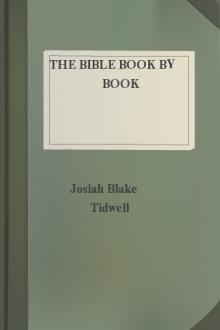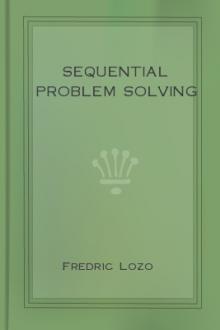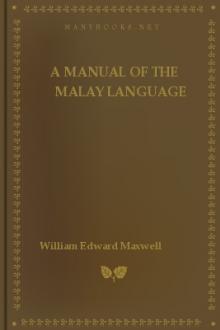The Bible Book by Book by Josiah Blake Tidwell (best short books to read .txt) 📕

- Author: Josiah Blake Tidwell
- Performer: -
Book online «The Bible Book by Book by Josiah Blake Tidwell (best short books to read .txt) 📕». Author Josiah Blake Tidwell
From the context of Col. 4:4 we learn that he was "not of the circumcision" and, therefore, a Gentile. From his preface (Lu. 1:1) we learn that he was not an eye witness of what he wrote. He is thought to be "the brother" whose praise is in the gospel throughout all the churches (2 Cor. 8:18), and, by tradition, is always declared to be a Gentile and proselyte. As is indicated by the gospel itself, he was the most cultured of all the gospel writers.
Characteristics and Purpose.
1. It Is a Gospel of Song and Praise. There are a number of songs such as the song of Mary (1:46-55), the song of Zacharias (1:68-79), the song of the angels (2:14) and the song of Simeon (2:29-33). There are many expressions of praise such as (2:2; 5:29; 7:16; 13:13; 17:15; 18:43; 23:47).
2. It Is a Gospel of Prayer. Jesus prays at his baptism, (3:21), after cleansing the leper (5:16), before calling the twelve (6:12), at his transfiguration (9:28), before teaching the disciples to pray (11:1), for his murderers as he was on the cross (23:34), with his last breath (23:46). Luke gives us Christ's command to pray (21:36) and two parables, the midnight friend (11:5-13) and the unjust judge (18:1-8) to show the certain and blessed results of continued prayer.
3. It Is a Gospel of Womanhood. No other gospel gives her anything like so large a place as Luke. Indeed, all of the first three chapters or a greater part of their contents may have been given him, as he "traced out accurately from the first" (1:3), by Mary and Elizabeth. He gives us the praise and prophecy of Elizabeth (1:42-42), the song of Mary (1:46-55). Anna and her worship (2:36-38), sympathy for the widow of Nain (7:12-15), Mary Magdella the sinner (7:36-50), the woman associates of Jesus (8:1-3), tender words to the woman with an issue of blood (8:48), Mary and Martha and their disposition (10:38-42). sympathy and help for the "daughter" of Abraham (13:16), the consolation of the daughters of Jerusalem (23:28). These references have been collected by others and are the most conspicuous ones and serve to show how large a place woman is given in this gospel.
4. It Is a Gospel of the Poor and Outcast. More than any other of the evangelists Luke reports those teachings and incidents in the life of our Savior which show how his work is to bless the poor and neglected and vicious. Among the more striking passages of this character are the oft repeated references to the publicans (3:12; 5:27, 29, 30, etc.), Mary Magdella, who was a sinner (7:36-50), the woman with an issue of blood (8:43-48), the harlots (15:30), the prodigal son (13:11-32), Lazarus, the beggar (16:13-31), the poor, maimed, halt and blind invited to the supper (14:7-24). the Story of Zacchaeus (19:1- 9), the Savior's business declared to be to seek and save the lost (8:10), the dying robber saved (23:39-43).
5. It Is a Gentile Gospel. The book is everywhere filled with a world wide purpose not so fully expressed in the other evangelists. Here we have the angels, announcement of great joy which shall be to all people (2:10) and the song about Jesus as "a light for revelation to the Gentiles" (2:32). The genealogy traces Christ's lineage back to Adam (2:38) and thus connects him not with Abraham as a representative of humanity. The fuller account of the sending out of the seventy (10:1-24). the very number of whom signified the supposed number of the heathen nations, who were to go, not as the twelve to the lost sheep of the house of Israel, but to all those cities whither Jesus himself would come, is suggestive of this broader purpose of Luke. The good Samaritan (10:25-37) is Christ's illustration of a true neighbor and in some way also intends to show the nature of Christ's work which was to be without nationality. Of the ten lepers healed (17:11-19) only one, a Samaritan, returned to render him praise, thus showing how others than the Jews would not only be blessed by him but would do worthy service for him. The Perean ministry, across the Jordan (9:51- 18:4, probably 9:51-19:28). is a ministry to the Gentiles and shows how large a place Luke would give the Gentiles in the work and blessings of Jesus.
6. It Is a Gospel for the Greeks. If Matthew wrote for Jews and Mark for Romans, it is but natural that some one should write in such a way as to appeal, specially, to the Greeks as the other representative race. And, such the Christian writers of the first centuries thought to be Luke's purpose. The Greek was the representative of reason and humanity and felt that his mission was to perfect humanity. "The full grown Greek would be a perfect world man", able to meet all men on the common plane of the race. All the Greek gods were, therefore, images of some form of perfect humanity. The Hindu might worship an emblem of physical force, the Roman deify the Emperor and the Egyptian any and all forms of life, but the Greek adored man with his thought and beauty and speech, and, in this, had most nearly approached the true conception of God. The Jew would value men as the descendants of Abraham; the Roman according as they wielded empires, but the Greek on the basis of man as such.
The gospel for the Greek must, therefore, present the perfect man, and so Luke wrote about the Divine Man as the Savior of all men. Christ touched man at every point and is interested in him as man whether low and vile or high and noble. By his life he shows the folly of sin and the beauty of holiness. He brings God near enough to meet the longings of the Greek soul and thereby furnish him a pattern and brother suited for all ages and all people. The deeds of Jesus are kept to the background while much is made of the songs of others and the discourses of Jesus as they were calculated to appeal to the cultured Greek. If the Greek thinks he has a mission to humanity, Luke opens a mission ground enough for the present and offers him an immortality which will satisfy in the future.
7. It Is an Artistic Gospel. Renan calls Luke the most beautiful book in the world, while Dr, Robertson says "the charm of style and the skill in the use of facts place it above all praise". The delicacy and accuracy, picturesqueness and precision with which he sets forth the different incidents is manifestly the work of a trained historian. His is the most beautiful Greek and shows the highest touches of culture of all of the gospels.
Subject. Jesus the World's Savior.
Analysis.
Introduction. The dedication of the gospel, 1:1-4.
I. The Savior's Manifestation, 1:5-4:13.
1. The announcement of the Forerunner, 1:5-25.
2. The announcement of the Savior. 1:26-38.
3. Thanksgiving of Mary and Elizabeth, 1:29-56.
4. The birth and childhood of the Forerunner, 1:37 end.
5. The birth of the Savior, 2:1-20.
6. The childhood of the Savior. 3:1-4:13.
II. The Savior's Work and Teaching in Galilee, 4:14-9:50.
1. He preaches in the synagogue at Nazareth. 4:14-30.
2. He works in and around Capernaum, 4:31-6:11.
3. Work while touring Galilee, 6:12-9:50.
III. The Savior's Work and Teaching After Leaving Galilee Up to the Entrance Into Jerusalem, 9:31-19:27.
1. He journeys to Jerusalem, 9:51 end.
2. The mission of the Seventy and subsequent matters, 10:1-11:13.
3. He exposes the experience and practice of the day, 11:14-12 end.
4. Teachings, miracles warnings and parables, 13:1-18:30.
5. Incidents connected with his final approach to Jerusalem, 18:31- 19:27.
IV. The Savior's Work and Teaching in Jerusalem, 19:28-22:38.
1. The entrance to Jerusalem, 19:28 end.
2. Questions and answers. Ch. 20.
3. The widow's mites, 21:1-4.
4. Preparation for the end, 21:5-22:38.
V. The Savior Suffers for the World, 22:39-23 end.
1. The agony in the garden, 22:39-46.
2. The betrayal and arrest, 22:47-53.
3. The trial. 22:54-23:26.
4. The cross, 23:27-49.
5. The burial, 23:30 end.
VI. The Savior is Glorified, Ch. 24.
1. The resurrection, 1-12.
2. The appearance and teachings, 13-49.
3. The ascension, 50 end.
For Study and Discussion.
1. Six miracles peculiar to Luke. (1) The draught of fishes, 5:4-11. (2) The raising of the widow's son, 7:11- 18. (3) The woman with the spirit of infirmity, 13:11-17. (4) The man with the dropsy, 14:1-6. (5) The ten lepers, 17:11-19. (6) The healing of Malchus' ear. 22:50-51.
2. Eleven parables, peculiar to Luke. (I) The two debtors, 7:41-43. (2) The good Samaritan, 10:25-37. (3) The importunate friend, 11:5-8. (4) The rich fool, 12:16-19. (5) The barren fig-tree, 13:6-9. (6) The lost piece of silver, 15:8-10. (7) The prodigal son, 15:11-32. (8) The unjust steward, 16:1-13. (9) The rich man and Lazarus, 18:19-31. (10) The unjust judge, 18:1-8. (11) The Pharisee and publican, 18:9-14.
3. Some other passages mainly peculiar to Luke. (1) Chs. 1-2 and 9:51- 18:14 are mainly peculiar to Luke. (2) John the Baptist's answer to the people. 3:10-14. (3) The conversation with Moses and Elias, 9:30- 31. (4) The weeping over Jerusalem, 19:41-44. (5) The bloody sweat, 22:44. (6) The sending of Jesus to Herod, 23:7-12. (7) The address to the daughters of Jerusalem, 23:27-31. (8) "Father forgive them", 23:34. (9) The penitent robber, 23:40-43. (10) The disciples at Emmaus, 24:13-31; (11) Particulars about the ascension. 24:50-53.
4. The following words and phrases should be studied, making a list of the references where each occurs and a study of each passage in which they occur with a view of getting Luke's conception of the term. (1) The "son of man" (23 times). (2) The "son of God" (7 times). (3) The "kingdom of God" (32 times). (4) References to law, lawyer, lawful (18 times). (5) Publican (11 times). (6) Sinner and sinners (16 times). Mr. Stroud estimates that 59 percent of Luke is peculiar to himself and Mr. Weiss figures that 541 have no incidences in the other gospels.
John.
The Author. From the evidence found in the gospel, we may learn several things about the author. (1) That he was a Jew. This is seen in his evident knowledge of Jewish opinions concerning such subjects as the Messiah, and his knowledge of their customs, such as the purification. (2) He was an eye-witness to most of what he relates. This is seen in his exact knowledge of time, as to the hour or time of day a thing occurred; in his knowledge of the number of persons or things present, as the division of his garments into four parts; in the vividness of the narrative which he could hardly have had without first having seen it all. (3) He was an apostle. This is seen in his knowledge of the thoughts of the disciples (2:11, 17); in his knowledge of the private words of the disciples to Jesus and among themselves (4:31, 33, etc.); in his knowledge of the private resorts of the disciples (11:54. etc.); and in his knowledge of the Lord's motives, etc. (2:24-25, etc.); and in his knowledge of Christ's feelings (11:33). (4) He was the son of Zebedee (Mar. 1:19-20), and was probably one of John's two disciples whom he turned to Jesus (1- 40). (5) He is one of the three most prominent of the apostles, being several times especially honored (Matt. 17:1-3. etc.), and is prominent in the work of the church after Christ's ascension, as well as in all their work before his death: (6) He also wrote three epistles and Revelation. He outlived all the other apostles and is supposed to have died on the Isle of Patmos as an exile about 100





Comments (0)